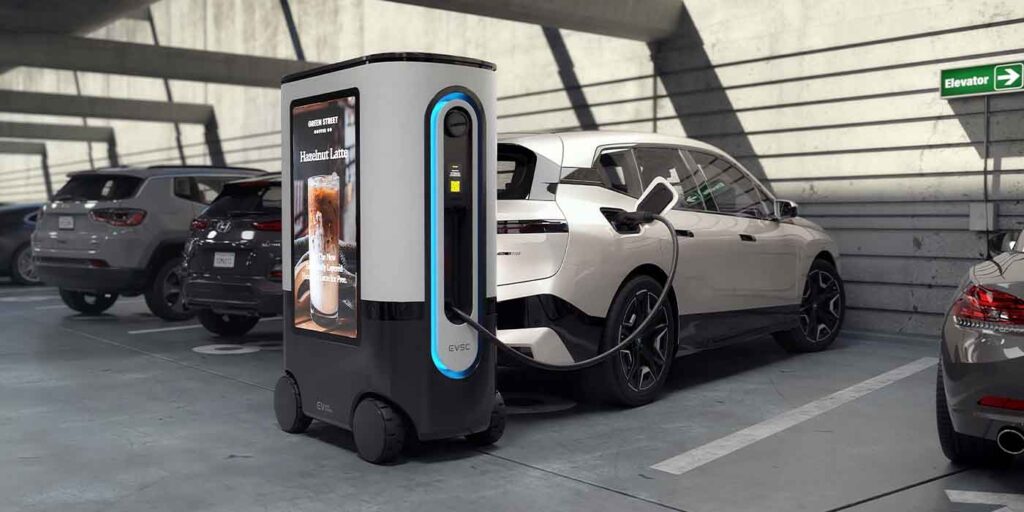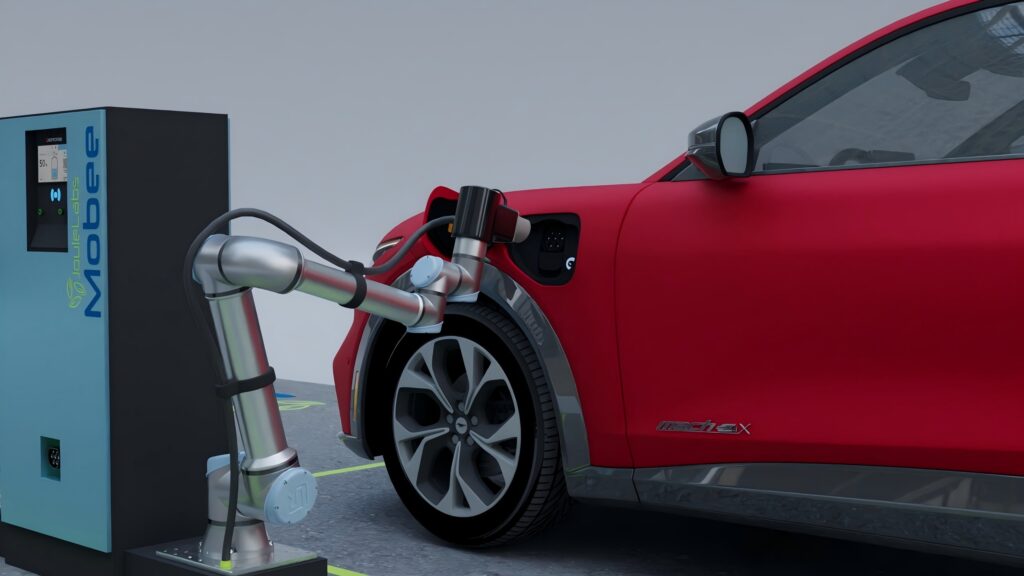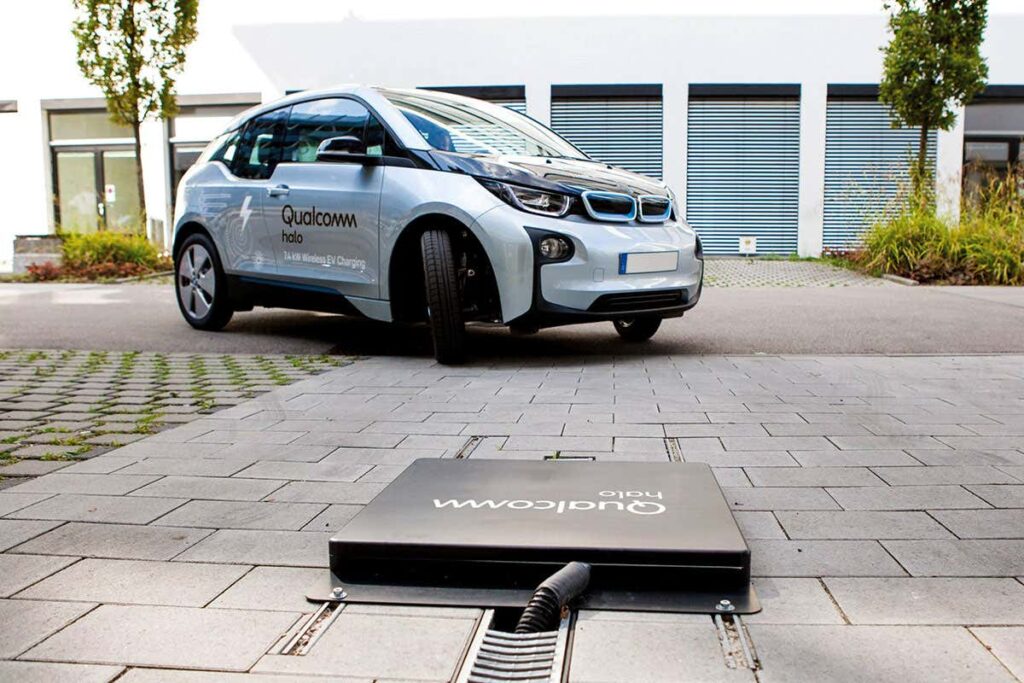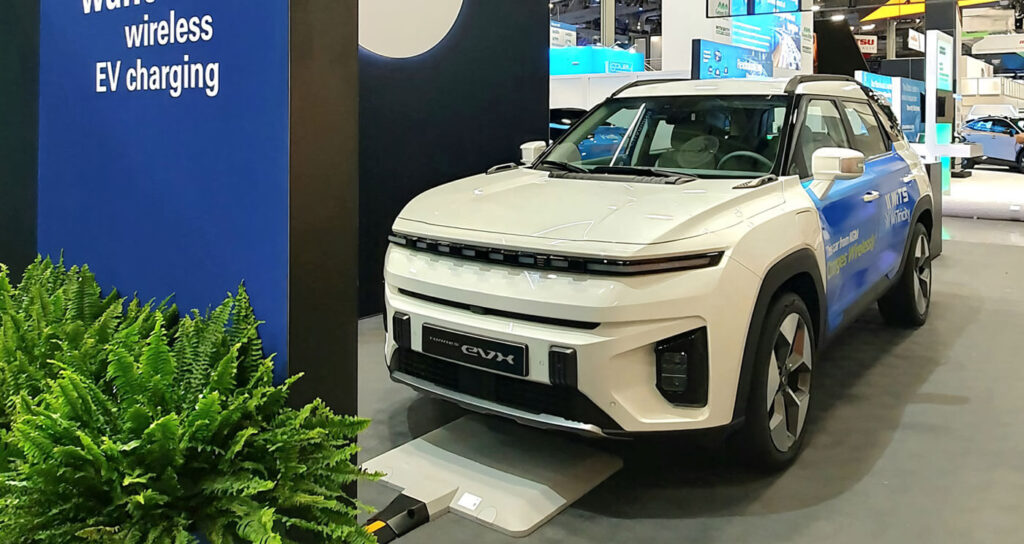Are you struggling to decide between charging robots and wireless charging for your parking facility? It’s a tough choice, with both technologies promising a futuristic charging experience.
For most future parking scenarios, charging robots currently offer a more practical and adaptable solution than wireless charging. Their flexibility, scalability, and ease of retrofitting into existing infrastructure make them a more realistic choice in the short to medium term.

But the decision isn’t always straightforward. Let’s dive into a detailed comparison, exploring the hidden complexities and overlooked aspects of each technology, to help you make the best choice for your specific needs.
Future Parking Charging, Robot vs Wireless, Who Will Dominate?
Do you feel overwhelmed by the hype surrounding both charging robots and wireless charging? Both promise a revolution, but which one truly delivers?
While wireless charging offers a sleek, cable-free vision, charging robots are emerging as the more adaptable and practical champions for the majority of parking scenarios, especially in the near future.

Let’s examine each technology closely, exposing their strengths and weaknesses, and cutting through the marketing noise to reveal the realities of implementation and operation. I’ll share my industry experience to shed light on often-overlooked aspects.
Charging Robots: Flexible and Mobile, But Are They Suitable for Your Parking Lot?
Imagine a scenario: a packed parking lot, with electric vehicles constantly coming and going. Do you install a fixed charger in every spot, or is there a better way?
Charging robots offer a compelling solution: mobile charging stations that come to the vehicle, eliminating the need for dedicated charging bays and maximizing space utilization.

The Practicalities of Charging Robots
Charging robots, essentially mobile charging stations on wheels, present several advantages, but also raise some important questions.
Flexibility and Scalability:
- Pro: Robots can be deployed where needed, adapting to fluctuating EV demand. This is particularly beneficial for large parking facilities like airports or shopping malls. You simply add more robots as demand grows, avoiding the high upfront cost of installing fixed chargers everywhere.
- Con: The initial investment in a fleet of robots can be substantial, although the long-term ROI can be faster than fixed infrastructure.
Navigation and Safety:
- Pro: Robots utilize sensors and AI to navigate parking lots.
- Con: Navigating busy environments with pedestrians, moving vehicles, and obstacles remains a significant challenge. Liability in case of accidents is a major concern for parking lot operators.
User Experience:
- Pro: Eliminates the need for EV owners to search for an available charging spot.
- Con: Users may need to use an app to request charging, which adds a small step to the process. There may also be user apprehension about robots moving around their vehicles.
Autonomy Levels
- Pro: The goal is fully autonomous robots.
- Con: Some models, like BaTTeRi’s “Thomas”, require some human interaction.
Maintenance:
- Pro: Comparable to traditional charging stations, using wired connections.
- Con: More vulnerable to vandalism or accidental damage.
Wireless Charging: Say Goodbye to Cables, But What’s the Cost of “Wireless Power”?
Is the dream of simply parking and charging without any cables too good to be true? It’s enticing, but is it practical for widespread adoption?
Wireless charging offers the ultimate convenience for the end-user, eliminating the need to handle cables. However, the installation, maintenance, and standardization challenges are significant.

The Hidden Complexities of Wireless Charging
Wireless charging, primarily using inductive charging technology, promises a seamless experience, but let’s uncover the hidden costs and challenges.
Installation and Maintenance:
- Pro: Aesthetically pleasing, with minimal visual clutter.
- Con: Far more complex than it appears. It involves precise alignment, ground excavation, and dealing with potential interference. Repairing a buried charging pad can be disruptive and expensive.
Standardization:
- Pro: Efforts are underway to establish common standards.
- Con: Different wireless charging standards are emerging, creating a potential “format war”. This fragmentation could hinder adoption, as parking lot owners would need to support multiple standards.
Cost:
- Pro: Costs are expected to decrease over time.
- Con: Wireless charging systems are currently more expensive than wired solutions, both in terms of equipment and installation.
Efficiency:
- Pro: Improving, though with a bit of loss.
- Con: Slightly less efficient than wired charging due to energy loss during transmission.
Scalability:
- Pro: Static wireless charging in parking spots is more realistic.
- Con: “Dynamic charging” (charging while driving) faces astronomical infrastructure costs and is likely decades away.
Cost Comparison: Charging Robots VS Wireless Charging, Who is More Economical?
Are you primarily concerned with the bottom line? Which technology offers the best return on investment?
Charging robots generally offer a faster ROI and lower upfront costs for large-scale deployments compared to wireless charging, although individual unit costs can vary.

Breaking Down the Costs
Let’s analyze the cost factors for both technologies:
| Feature | Charging Robots | Wireless Charging |
| Initial Cost | Moderate (per robot cost, but scalable). Need fewer units overall, since they can service multiple spots. | High (per charging pad cost, plus installation). Need a pad for every spot you want to offer wireless charging. |
| Installation | Minimal (deploy robots to existing lot). | Very High (ground excavation, precise alignment, electrical work). Difficult and expensive to retrofit. |
| Maintenance | Comparable to wired charging stations. Robots are more exposed and potentially vulnerable to damage. | Lower day-to-day (equipment is buried), but much higher if a pad fails (requires excavation). |
| Scalability | Excellent (add more robots as needed). | Poor for dynamic charging (road infrastructure). Moderate for static charging (requires installation in each spot). |
| Retrofitting | Easy (no infrastructure changes). | Difficult and expensive (requires digging up existing pavement). |
| ROI | Potentially faster, especially in high-demand, fluctuating usage scenarios. Robots can service more vehicles, increasing utilization rates. | Slower, due to high upfront costs and lower utilization rates (a pad can only charge one car at a time). |
| Hidden cost | Navigation and safety in busy parking lots, Liability in case of accidents. | Standardization,Maintenance. |
Technical Maturity and Future Prospects: Who Will Lead the Future of Parking Charging?
Are you looking for a future-proof solution? Which technology has the greatest potential for long-term growth and innovation?
While both technologies are evolving, charging robots currently demonstrate greater technical maturity for widespread parking applications, while wireless charging shows promise in specific niches.

The Technological Landscape
Charging Robots:
- Current State: Commercially available, with ongoing development to improve autonomy, navigation, and safety.
- Future Prospects: Continued refinement of AI and sensor technology, leading to fully autonomous operation. Integration with smart grid systems for optimized charging and load balancing.
- Key Challenges: Achieving reliable and safe navigation in complex environments. Public acceptance and trust in autonomous robots.
Wireless Charging:
- Current State: Static wireless charging is commercially available, but primarily for specific applications (e.g., luxury vehicles, dedicated parking spots). Dynamic charging remains largely in the research and development phase.
- Future Prospects: Improved efficiency and power transfer capabilities. Standardization efforts to address fragmentation. Potential for integration with autonomous vehicles.
- Key Challenges: Overcoming high infrastructure costs, particularly for dynamic charging. Achieving widespread standardization. Addressing concerns about efficiency and electromagnetic interference.
Choose the Best Solution for Your Parking Lot: Key Factors and Decision Guide
Confused by all the options? How do you make the right decision for your specific parking facility?
The optimal choice depends on your specific needs, priorities, and budget. Consider factors like parking lot size, EV charging demand, budget constraints, and long-term goals.

A Decision-Making Framework
Here’s a guide to help you choose the best solution:
| Factor | Charging Robots | Wireless Charging |
| Parking Lot Size | Large facilities (airports, malls, campuses) | Smaller, designated areas (taxi stands, VIP parking) |
| EV Charging Demand | Unpredictable, fluctuating, high volume | Consistent, predictable, lower volume |
| Budget | Moderate upfront, lower long-term (scalable) | High upfront, higher long-term (infrastructure) |
| Aesthetics | Less important (robots are visible) | Very important (minimal visual impact) |
| Retrofitting | Easy | Difficult and expensive |
| Autonomous Vehicles | Compatible, but not essential | Highly synergistic (seamless integration) |
| Long-Term Scalability | Excellent | Challenging, especially for dynamic charging |
| User Experience | App may be need. | Ultimate convenience, but with need to park precisely. |
Conclusion
Charging robots and wireless charging represent exciting advancements in EV charging technology. While wireless charging holds the promise of a cable-free future, charging robots offer a more practical, flexible, and scalable solution for most parking scenarios today. Their ability to adapt to changing demand and integrate into existing infrastructure makes them the frontrunners in the race to electrify parking. However, the best choice ultimately depends on your unique circumstances and priorities.

